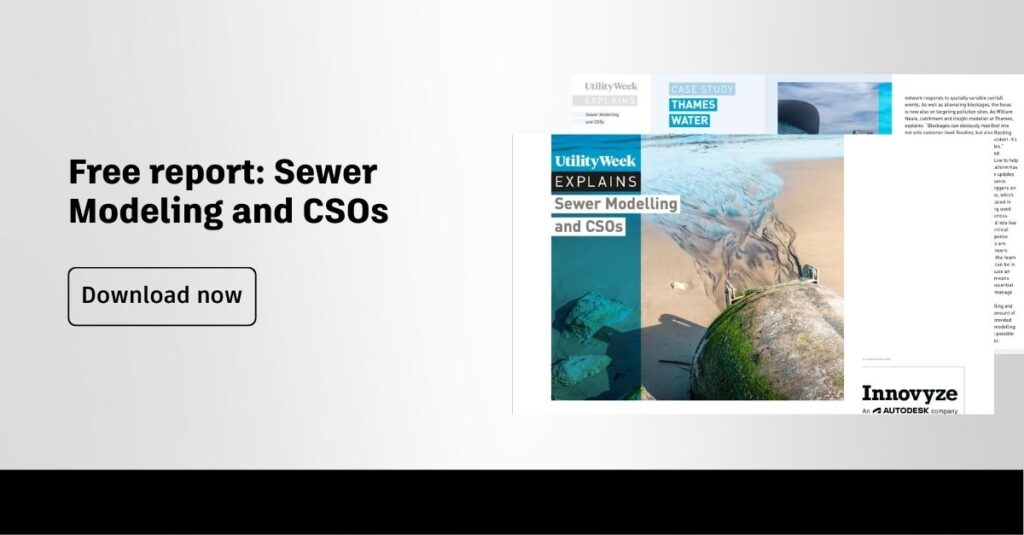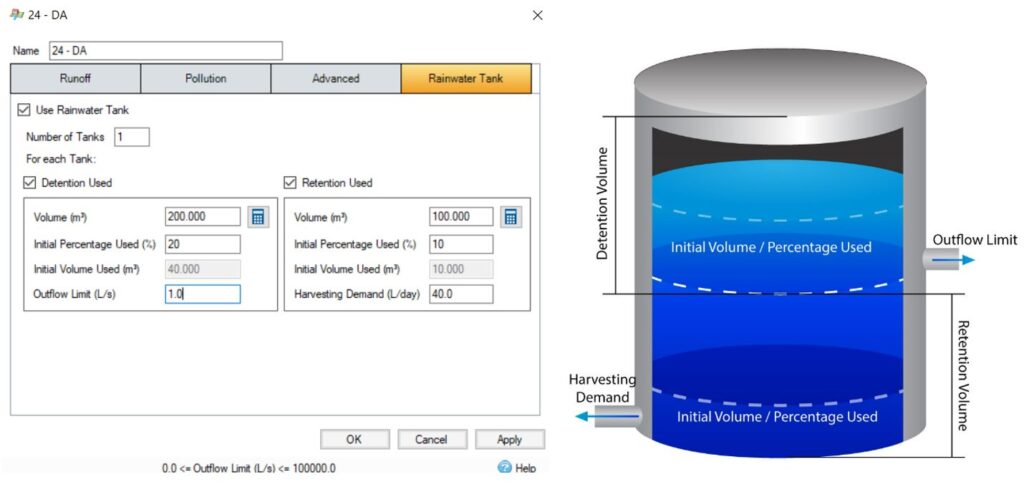& Construction

Integrated BIM tools, including Revit, AutoCAD, and Civil 3D
& Manufacturing

Professional CAD/CAM tools built on Inventor and AutoCAD
Combined Sewer Overflows (CSOs) discharge raw, untreated sewage directly into rivers and seas during heavy rainfall events. This untreated sewage has environmental impacts and poses a risk to public health, depleting oxygen in the water, causing fish kills, and (if it gets bad enough) spreading disease. It’s become a hot-button issue in the UK.

Download the report
How are hydraulic models used to predict CSO incidents? Do utilities need specific in-house expertise to make use of sewer modelling technology? To help answer these big questions (and 9 more!) we’ve partnered with Utility Week to develop a downloadable report about CSOs in the UK, which also includes two mini case studies that show how Thames Water and Anglian Water are tackling the issue. You can download it from their site.
This issue won’t go away without action, and regulators in the UK have been increasingly promoting and mandating regulations to help solve this pernicious problem. We know it’s important to both water professionals who are tasked with helping solve these problems and everyday people who rely on clean water to function and thrive.
The good news about CSOs is that sewerage systems are usually designed to remove both wastewater from buildings and surface water from rainfall by including CSO outlets in their networks. This allows for discharges when the system is overloaded. If the CSOs weren’t there, sewage would simply back up into homes.

But the UK infrastructure has a very long history. Many 19th-century sewerage systems were designed to combine both foul and drainage systems into a one-piped network that leads to a wastewater treatment works. Truth be told, even Victorian-era combined systems can still work, but not if they are continually overloaded. With the infrastructure increasingly showing its age and rainfall levels seemingly already increasing due to climate change, UK water professionals will need to act quickly to ensure they design their sewerage networks with these facts in mind — or adapt existing infrastructure to help prevent CSO spills.
The first step to solve this problem is to reduce the volume of rainfall in a combined system by holding onto storm water before discharging to rivers. You could install new, larger storage structures to store water and reduce the peak of the flow, or install pipework to separate stormwater from wastewater flows but, of course, it’s not always practical to dig up roads and install hard-engineered solutions to separate the stormwater drainage from the wastewater network. In fact, it’s quite expensive and time-consuming. With most of the infrastructure in England and Wales being built to last 60-80 years, at the current rate of replacement, it might take 800 years to accomplish full rehabilitation.
Instead, Sustainable Drainage Solutions (SuDS) are increasingly being adopted to mitigate the impact of increased surface water. SuDS is based on the concept that rainwater should go back into the ground closest to the point where it falls to alleviate flooding, replenishing groundwater supplies and improving water quality. Not only does it reduce the chance of a CSO spill, but it reduces road runoff which carries polluting heavy metals and petroleum residues. That’s another benefit to SuDS. Well-designed SuDS can actually help filter many types of residue and pollutants.
These green infrastructure features also improve the biodiversity value and appearance of urbanised areas. None can deny that SuDS are a lot more pleasant to look at than a landscape covered in concrete. Greenery matters, and SuDS often brings about the unexpected benefit of revitalising community spaces. It simply makes the people who live there happier. That might be the best benefit of all.
We strongly encourage the use of SuDS (“LIDs” in the US; Low-Impact Development) in your planning, and you’ll find lots of SuDS-friendly tools inside apps like InfoWorks ICM and InfoDrainage. But so much more can be done to prevent CSOs beyond designing larger pipes and incorporating SuDS:

Do you want to design in a SuDS-friendly way?
Download a 30-day free trial of our stormwater drainage design software InfoDrainage – no credit card required – and follow along with our Introduction to InfoDrainage learning series.
We’re hearing more and more questions from different types of customers (and potential customers) about working with SuDS inside our products, and we think that’s a good sign.
What’s your use case? What do you need to accomplish to alleviate unplanned CSO spills? Download the new Utility Week report and hone your CSO strategy.
Sign up for the One Water Blog newsletter, and we'll keep you updated about our top stories, along with the best content we find online. We only send out a newsletter when we have something interesting to share.
May we collect and use your data?
Learn more about the Third Party Services we use and our Privacy Statement.May we collect and use your data to tailor your experience?
Explore the benefits of a customized experience by managing your privacy settings for this site or visit our Privacy Statement to learn more about your options.